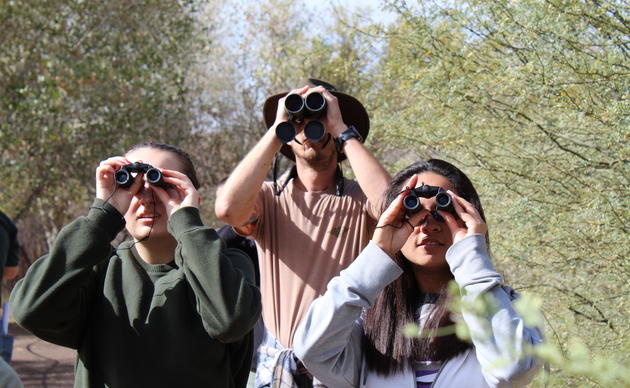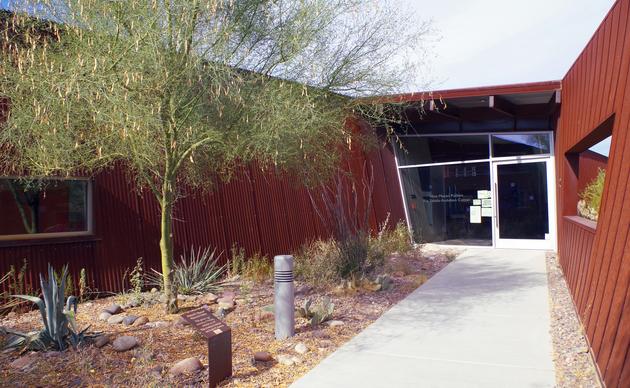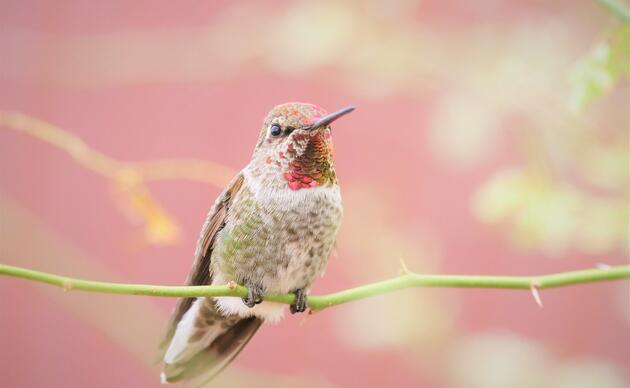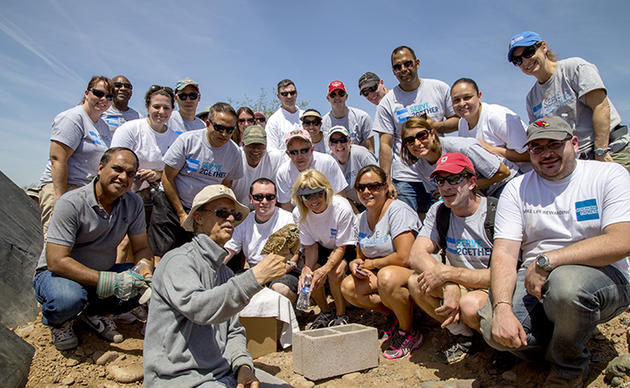Native Plants that Attract Birds
Landscaping with wildlife in mind helps replace some of the habitat lost a result of urban development. Below are a few native plants that will provide vital services to local and migratory bird populations.
|
Trees |
|
|
Ironwood (Olneya tesota) The Ironwood is an excellent bird sanctuary. It produces pods with seeds that provide a protein-rich resource for birds. Insects abound within it, attracting birds. The Ironwood’s dense canopy has been utilized by nearly 150 bird species, and the shade underneath it can shelter cacti for nesting and wildflowers for foraging. Growing an Ironwood to maturity in your yard greatly increases the number of birds your yard can support.
|
|
|
Velvet Mesquite (Prosopis velutina), Honey Mesquite (P. glandulosa) The Velvet and Honey Mesquites are also excellent trees for birds. They provide breeding, nesting, and roosting sites. They are home to insects on foliage, bark, and flowers that attract a wide variety of birds. In addition, their seeds and sweet fleshy pods are eaten by doves, quail, and other birds. |
|
|
Arizona Ash (Fraxinus velutina) |
|
|
|
|
|
Catclaw (Acacia greggii) The Catclaw gets its name from short curved spines hidden by the leaves along its branches. These spines offer excellent protection to birds that seek shelter or make nests among its branches. Catclaws produce seeds that are eaten by quails, doves, and other birds and their flowers are an important source of nectar for bees. |
|
|
Desert Lavender (Hyptis emoryi) The gray leaves of Desert Lavender are covered with fine hairs that are soft to the touch and picked by birds to line their nests. Bees frequent the silvery-blue flowers throughout the year and birds like to nest among its branches. Place Desert Lavenders near walkways or patios to enjoy their fragrant foliage. |
|
|
Four-wing Saltbush (Atriplex canescens) The Four-wing Saltbrush gets its name from its fruits which grow with four papery wings attached to them. The seeds of this Saltbush are enjoyed by various birds including quail, doves, towhees, and finches. It also gives birds cover and nesting. |
|
|
|
|
|
|
Saguaro (Carnegiea gigantea) The saguaro is a dominant form in the Sonoran Desert. For birds, its massive succulent trunk takes the place of large trees for cavity nesting. Woodpeckers dig nest cavities in the trunk, which are later used by other hole-nesting species. The nectar, pollen, fruits and seeds from the saguaro are all eaten by birds. Large saguaros are one of the most valuable wildlife plants in the Sonoran Desert. |
|
© Scott Millard |
Prickly Pear (Opuntia species) Prickly pear cactus offer good escape cover for birds. Some prickly pears produce a juicy fruit in the summer that are prized by many birds, and the flowers attract butterflies and other pollinating insects. Prickly pears are some of the least demanding plants as they can go long periods without water and tolerate very hot locations. |
|
|
Agave (Agave species) The flowers of the agave are an important food source for hummingbirds and attract other birds as well. A rosette of evergreen toothed succulent leaves grows from the base of the plant, and near the end of its life, an impressive, tall stalk with whitish or yellow flowers rises from the center. |
|
|
|
|
© Charles Mann |
Blue Grama Grass (Bouteloua gracilis) The curved seed heads on Blue Grama Grass are eaten by sparrows and finches. Blue Grama Grass is a small, perennial bunchgrass that can be grown in ornamental clumps among wildflowers or with cacti and succulents. It requires some irrigation in the desert. |
|
Desert Marigold (Baileya multiradiata) Desert Marigold produces bright yellow flowers nearly all year long if watered occasionally during summer. The seeds are eaten by doves, sparrows, and finches. Flower stalks grow up to 18 inches tall and sit above gray-green foliage. It is a short-lived perennial, but reseeds itself well and is very drought-tolerant.
|
|
|
Globe Mallow (Sphaeralcea ambigua) The Globe Mallow produces numerous showy stalks of orange flowers which extend up to 2’ above the plant which reaches up to 3 feet tall by 3’ wide. A perennial, it produces abundant flowers in spring and sometimes fall and a few during rest of year. Doves, quail and sparrows feed on seeds, especially in late spring and early summer. |
Resources
For more information, check out the following resources for landscaping in Arizona:
· Landscaping for Desert Wildlife (The Arizona Game and Fish Department) – Learn which Arizona native trees, shrubs, cacti, succulents, flowers, and grasses have especially high value for native wildlife.
· Selecting Plants for Pollinators in the American Semidesert and Desert (The Pollinator Partnership) – Offers a list of plants that attract pollinators and information on how to meet pollinators’ needs.
· Landscape Plants for the Arizona Desert (The Arizona Municipal Water Users Association) - Browse hundreds of low-water-use plants. Look for the label "Attracts Wildlife" for plants that will attract birds, hummingbirds, and butterflies.
· Plant Native – Includes a list of native Arizona plants and nurseries as well as a detailed tutorial on how to create a “naturescape,” a landscape of native plants.
As well as resources for any region:
· Yard Map (Cornell Lab of Ornithology) – Explore your habitat by mapping your yard, help gather information, attract more birds, and share your successes with people around the country using their yards to support birds and other wildlife.
· Create a Wildlife Garden (National Wildlife Foundation) - Learn general principles on how to create a garden that attracts wildlife by providing food, water, cover and a place for wildlife to raise their young.
· Creating a Healthy Yard (Audubon) - Take a habitat inventory, develop an action plan, and learn more about gardening basics and bird habitat necessities.
And for more inspiration, take a trip to local native habitats at:
· Rio Salado Audubon Center – 3131 S Central Ave, south of I-17
· Desert Botanical Gardens– 1201 N Galvin Pkwy, south of McDowell
· Tres Rios Wetlands – 91st Ave and Baseline
The Rio Salado Audubon Center’s Audubon at Home website is the result of a partnership between the City of Phoenix and Audubon Arizona as part of the U.S. Fish and Wildlife Service’s Urban Conservation Treaty for Migratory Birds.
Full funding for this program is supported by a Grant Agreement from the U.S. Department of the Interior, Fish and Wildlife Service. Mention of trade names or commercial products does not constitute their endorsement by the U.S. Government.
How you can help, right now
Donate to Audubon Southwest
Donate to save birds and educate the conservation leaders of tomorrow.
Join us for free guided bird walks
Free guided bird walks - Every first and third Saturday from 8 a.m. to 9 a.m. Please meet inside the center 5-10 minutes before departure time. Read more details here.
Sign up to volunteer with us!
Help restore environments or build habitat for displaced Burrowing Owls. Click here for more information.




